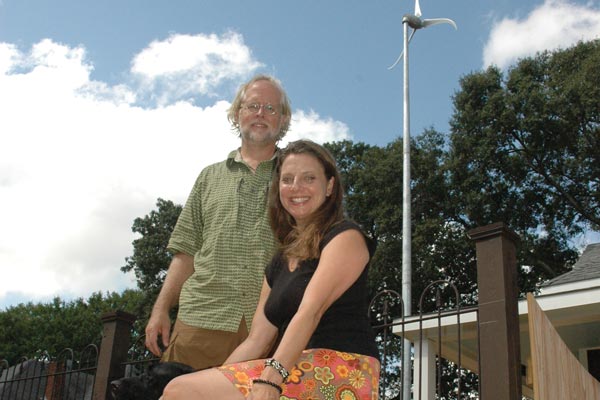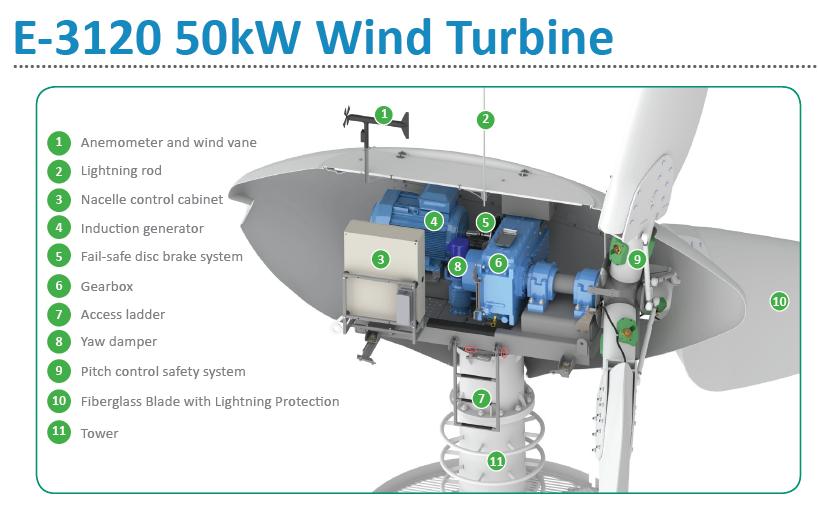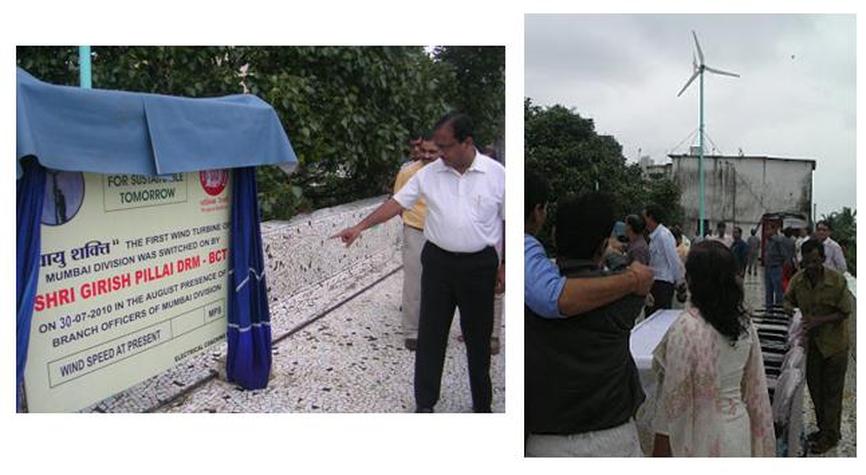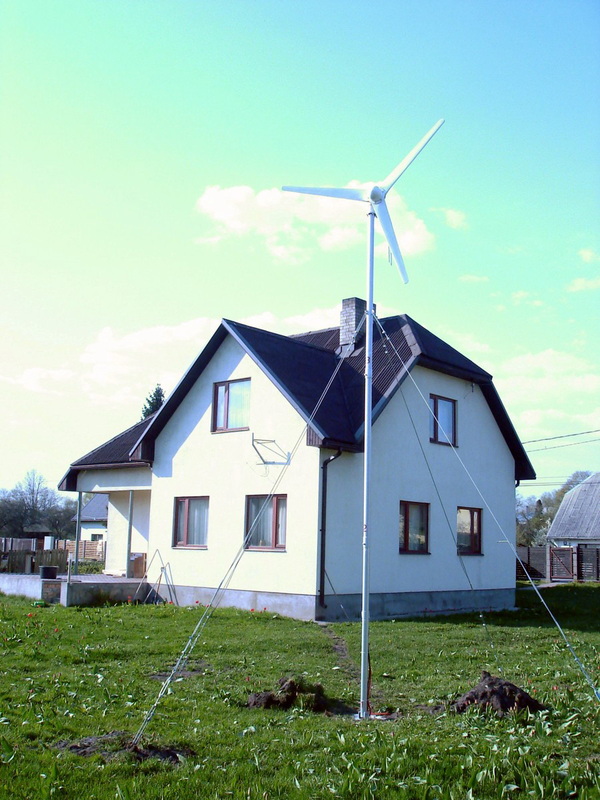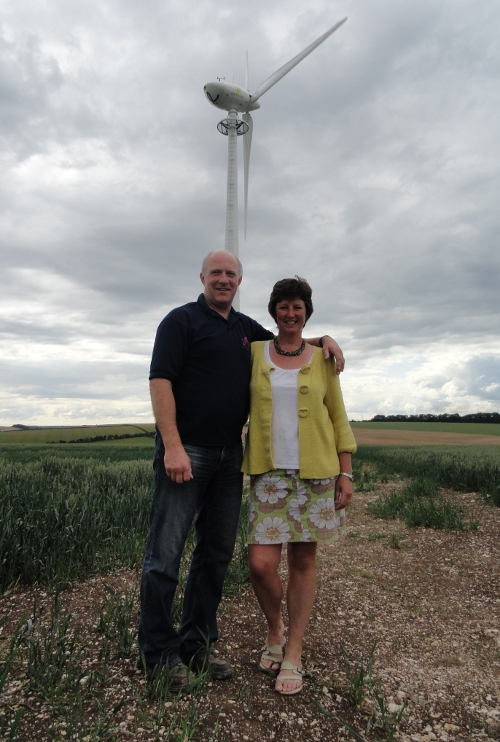Installing residential Wind energy?
For centuries wind power has played a major role in human history. As long ago as 5000 years wind was used to sail ships down the Nile in ancient Egypt. There are records from China 3000 years ago where they used windmills to grind grains and pump water. The first true windmill is believed to have been built in 2000 BCE in Babylon. By the 10th century AD, windmills were grinding grain in the area now known as Afghanistan. Now its time for you to use it too...
Curt and Christine Mann paid $15,000 for a 1.8 kilowatt Skystream wind turbine for their Atlanta home. They estimate the system will cut their utility bills by 15 to 20 percent. Well this was in 2008 before the Chinese hammered down the prices. Today you can get a 600 kWatt system for $ 6,200.
Curt and Christine Mann of Atlanta wanted to do more than just conserve energy—they wanted to produce power as well. Shade from a beautiful old oak ruled out installing solar panels on their bungalow’s roof, so the couple decided to try residential wind power. Wind power is one of the world’s fastest growing forms of electricity generation, and residential-scale wind turbines are seeing solid sales increases.
Typically, “small wind” turbines have three blades, about 15 feet in diameter, which are mounted on a 40- to 100-foot-tall tower and attached to a generator, which converts the wind power into electricity. This new generation of backyard wind turbines is quiet (less noisy than a refrigerator), durable (lasts 20 to 30 years with minimal maintenance) and is often designed to connect to a home’s electric power grid (some of them even transmit live data to your home computer).
Setting up a freestanding tower with a wind turbine is relatively quick and easy. And you can get the unit up in a day. The couple chose the Skystream 3.7 where “Everything is built in,” Curt says. “All we had to do was to create the foundation, hoist up the tower and run a few wires from the turbine into the meter.”
Setting up a freestanding tower with a wind turbine is relatively quick and easy. And you can get the unit up in a day. The couple chose the Skystream 3.7 where “Everything is built in,” Curt says. “All we had to do was to create the foundation, hoist up the tower and run a few wires from the turbine into the meter.”
Smaller wind turbines can be placed on top of a house or garage, though many variables factor into their location. Homeowners should be careful with rooftop installation, regardless of the turbine’s make or model as such an installations are difficult and risky, some buildings can’t structurally support a wind turbine, and turbulent air patterns could prevent the turbine from operating properly.
So before you set out on installing your Wind Turbine the first thing would be to:
- Check out the space and wind speed required for the system.
- Next thing would be to check out the price for the system.
- Next check out if the government is offering any tax credits or benefits.
- Check if your area has Net Metering. If yes then there is no question that you MUST have this system in place as soon as possible as the people who have net-metering benefit the most. Like for instance you have been on a holiday for a month and the house is closed the energy produced over the month is “sold” to the government. This amount will be discounted in your electricity bill. You could even start getting negative electric bills…
Free electricity isn’t all you get from a new home wind turbine, as soon as your system is up, you have improved your home value by at least an equal amount of the investment. Your green energy home is more likely to sell compared to others with no home generation or emergency power system. Think about it. Look at homes for sale.. Can any of them generate their own free electricity, how many can compete with such a solid green energy capability like your home wind turbine delivers. Its also an attention getter and will bring people to see what it’s about if you ever need to sell, your home has a dramatic edge and a higher resale value.
The home wind turbine systems are designed for reliable power output for the next 30 years or so. With every price increase of the utility company power your investment gets better all the time. Utility costs are rising all over and will accelerate over the next few years.
The home wind turbine systems are designed for reliable power output for the next 30 years or so. With every price increase of the utility company power your investment gets better all the time. Utility costs are rising all over and will accelerate over the next few years.
Do you have enough wind speed and space?:
The first step in installing a home wind turbine is to determine if the area you live has the correct wind velocity or speed to move the wind turbine at the required speed. At a minimum, you want an average speed of more than 10 miles (20km) per hour. A good way to check would be to check the weather in your area on your Smartphone or website like http://www.timeanddate.com/weather/india/mumbai
Much of the wind speed that you will receive will also depend upon your property’s natural features, including windswept trees, shrubbery and other buildings in the vicinity.
Most turbines also include a safety measure that automatically shuts the system off if wind speeds get too high, to prevent the engine from burning up.
The first step in installing a home wind turbine is to determine if the area you live has the correct wind velocity or speed to move the wind turbine at the required speed. At a minimum, you want an average speed of more than 10 miles (20km) per hour. A good way to check would be to check the weather in your area on your Smartphone or website like http://www.timeanddate.com/weather/india/mumbai
Much of the wind speed that you will receive will also depend upon your property’s natural features, including windswept trees, shrubbery and other buildings in the vicinity.
Most turbines also include a safety measure that automatically shuts the system off if wind speeds get too high, to prevent the engine from burning up.
Tower height is important because wind speed increases with altitude. Position turbine blades at least 10 feet higher than anything within 300 feet—trees, roofs, power lines—to cut down on turbulence that can reduce the turbine’s effectiveness. In urban areas, this can be a challenge because zoning regulations may limit a tower’s height, placement and other characteristics. Also the higher you go the more expensive it becomes for the mast and for the foundation to hold it all in place.
On your home, you can read your utility meter, but it’s easier to simply reference your utility bill. The utility bill usually displays a summary of the past year’s electrical usage, maybe an average. If you’re planning new construction, you’ll need to estimate your electrical use. Reviewing your utility bills from your current home or another existing home with a similar range of appliances. The best you can do on new construction is only be a guess, your actual usage may vary considerably.
On your home, you can read your utility meter, but it’s easier to simply reference your utility bill. The utility bill usually displays a summary of the past year’s electrical usage, maybe an average. If you’re planning new construction, you’ll need to estimate your electrical use. Reviewing your utility bills from your current home or another existing home with a similar range of appliances. The best you can do on new construction is only be a guess, your actual usage may vary considerably.
How Much Electricity?:
Your second step is to determine how much electricity you use in your home or business. Your electrical energy is measured and sold in kilowatt-hours (KWH), so you need to find out how many kilowatt-hours (KWH) you use per month.
Your main goal for the electrical needs analysis is to come up with the number of KWH per year that you want your wind system to generate. Without this analysis, you’re more likely to end up being unhappy with your investment in wind power.
Your second step is to determine how much electricity you use in your home or business. Your electrical energy is measured and sold in kilowatt-hours (KWH), so you need to find out how many kilowatt-hours (KWH) you use per month.
Your main goal for the electrical needs analysis is to come up with the number of KWH per year that you want your wind system to generate. Without this analysis, you’re more likely to end up being unhappy with your investment in wind power.
What Does it Cost:
Your last goal is to figure out exactly what this electricity kilowatt-hours (KWH) is costing you. That is critical in doing the return on investment (ROI) of a system.
Your last goal is to figure out exactly what this electricity kilowatt-hours (KWH) is costing you. That is critical in doing the return on investment (ROI) of a system.

